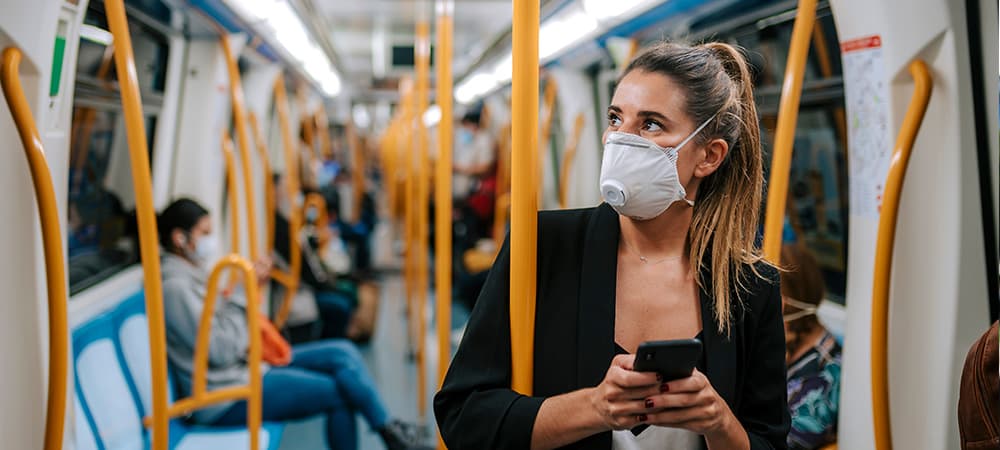Which method of transportation is preferred among students? Are certain methods gaining popularity as a result of the pandemic? We’ve compared the findings from two representative surveys from the Fachkraft 2030 study series conducted by jobvalley in cooperation with Maastricht University. A total of 28,500 participants were surveyed. The findings are from September 2019, before the pandemic hit, and September 2020, after the effects of COVID-19 could truly be felt. One thing is clear from the outset: the pandemic has significantly changed how we move around.
Cologne, 14 October 2020. Coronavirus remains the most pressing issue society is facing at present. We’re currently experiencing a worrying number of cases around the globe. But it's worth noting that not all global events have a vaccine. Climate change has carried on unhampered by the pandemic. One way we can do our part to help the planet is consciously selecting how we travel – by bike, car or train. As the key proponents of the Fridays for Future movement, you’d likely expect to see students exercising great care when it comes to selecting a means of transportation. Is this really the case, and if so, to what extent? Has the ongoing pandemic changed how we get around?
Mobility trends: Which means of transport do young people use?
In both September 2019 and 2020, the study participants were asked which third-party, i.e. not personal, mobility services they had used in the past 6 months. They could select between: Tram/underground, regional/commuter trains, public bus, long-distance bus, long-distance train, rental e-scooter, rental bicycle, car sharing, ridesharing and taxis, or cars with a driver. The results of both surveys are explored in more detail below.
2019 survey:
Local public transport (LPT) is split into three categories: Tram/underground, regional/commuter trains and public buses. These were used notably often in the first survey period, with almost 45% of participants stating that they had used trams and the underground on an almost daily basis. 35% used public buses and 30% opted for regional/commuter trains. This applies to both male and female respondents, with slight deviations.
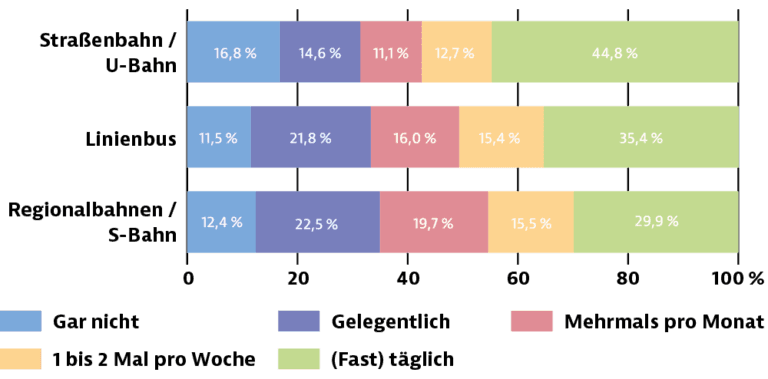
Survey 2020:
In the survey conducted in 2020, significant differences were found in student public transport use compared to the same period in the previous year, likely due to the impact of the pandemic in Germany. There was an overall drop in the use of public transport. Accordingly, not one of the three public transport categories came close to the figures achieved in the previous year in terms of (almost) daily use.
For example, trams and the underground were still the most popular way to get around in 2020, but at 31%, they are almost 14 percentage points less popular than in the previous year (44.8%). This situation is mirrored for public buses (-11%) and regional/commuter trains (-10%).
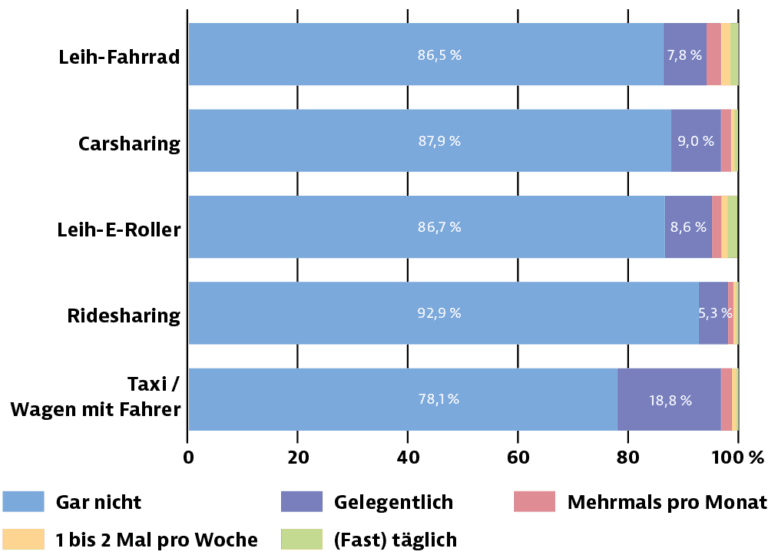
Lower use of public transport – mobility habits among female respondents
Keep in mind: Back when the study was conducted in September 2019, marginal differences at most were observed between male and female public transport users for the most frequently selected answer ‘(almost) daily’.
One year later, things have clearly changed: While 34.9% of male respondents still used trams and the underground (almost) daily in September 2020, only 26.5% of female respondents followed suit. The situation is largely similar for public buses and regional/commuter trains, as illustrated below.
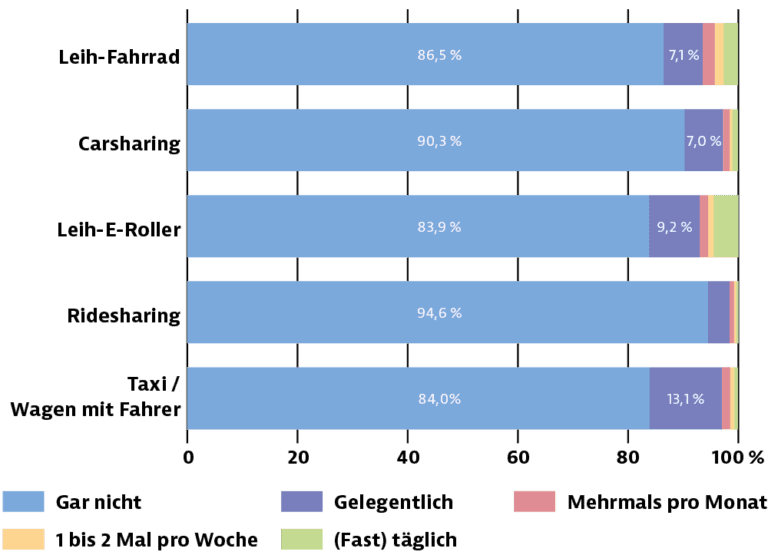
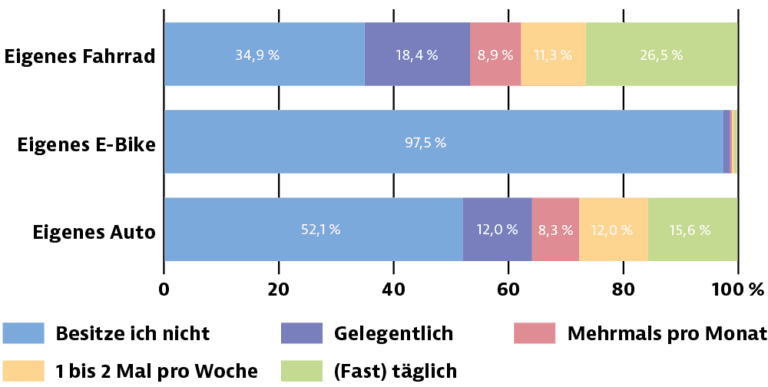
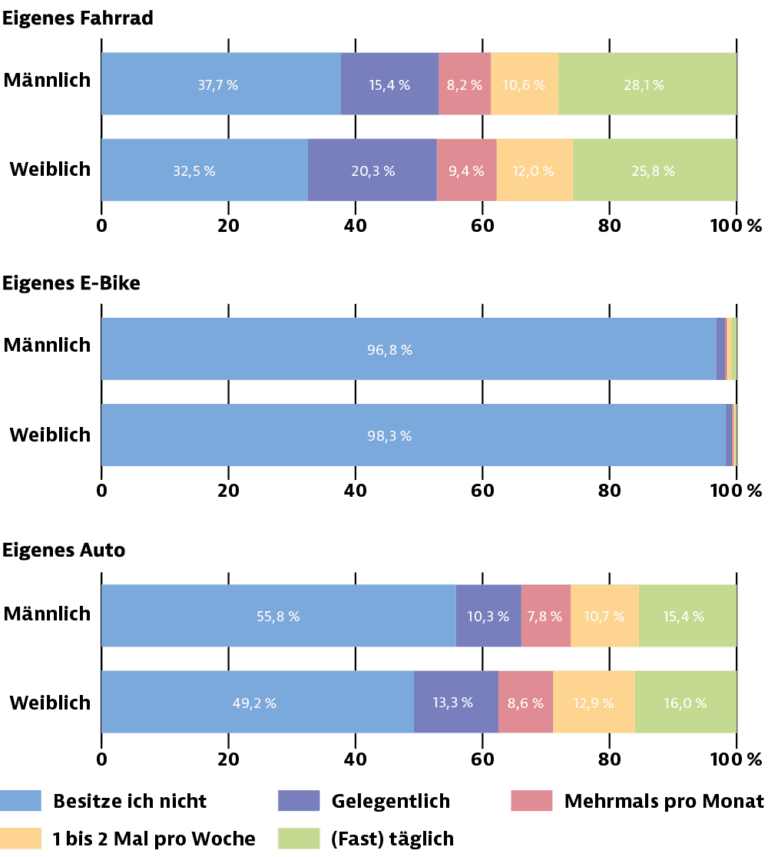
‘This is likely due to the rapid digitisation of universities and businesses spurred by the pandemic. Companies that previously believed working from home could never work a mere year ago now do it day in, day out. The difference observed between male and female respondents can perhaps be explained by the fact that male students are more likely to pursue physical activity at work, which inevitably requires them to venture out of the house' – explains the CEO of jobvalley, Eckhard Köhn.
Mobility on demand: Rental options, sharing initiatives and pick-up services
Before the pandemic, respondents stated that they ‘never used’ rental bikes or e-scooters at 86.5% and 86.7% respectively. Virtually no respondents reported using these mobility options on an ‘(almost) daily’ basis during the first survey period. Only 1.5% of respondents stated that they used a rental bike almost daily. The figure for e-scooters was 1.8%.
As illustrated below, a shift in mobility behaviour was also observed here when the survey was conducted for the second time (September 2020). The number of students using rental bikes and e-scooters on an (almost) daily basis had risen – nevertheless remaining at a negligible percentage overall.
The strongest increase was reported for the use of e-scooters on an (almost) daily basis, which shot up to a total of 4.5% of respondents. This corresponds to roughly two and a half times the percentage from the previous year. However, the rise in the (almost) daily use of rental bikes was considerably lower. Here, the percentage less than doubled compared to the first survey period. In terms of (almost) daily use, both modes of transport were used to a slightly greater extent by male respondents both before and during the COVID-19 pandemic.

Germany remains a nation of car lovers – almost 50% own a car
The sharing economy is growing, at least subjectively. Ownership, however, still seems to be highly regarded among Germans. While 2.5% of respondents own an e-bike, 65% have their own analogue bike. 48%, i.e. almost half of all students, own a car. As follows, the bike is the most popular way for students to get around. Around 26.5% of all respondents use it on an almost daily basis. By contrast, only 15.6% travel by car on a daily basis, and a mere 0.5% by e-bike.
The figures speak for themselves. Germany is continuing its love affair with the car. Something that can be further backed up by the question regarding possession of a class B driving licence. It turns out that 59.2% of the respondents have one, while 28.1% say they intend on getting one in the future. 12.7%, i.e. one-eighth of all respondents, stated they don’t want to obtain a driving licence. These findings contradict figures published by the Federal Motor Transport Authority, according to which the number of people learning to drive has substantially dropped. If we assume that the 28.1% students who do not yet have a class B driving licence obtain one in the future, this results in a total of 87.3% with a licence, meaning the number of car drivers is not only high, it's on the up.Coincidentally, the same applies to the number of cars registered in Germany, which is currently at a new record high.
jobvalley summary: Student mobility trends
All in all, the past year has witnessed a major shift in the way students get around. Reliance on public transport has dwindled in light of the pandemic. E-scooters, on the other hand, were rented far more often in 2020 than in 2019. However, it’s not possible to pinpoint this as a direct result of the pandemic, but rather as a response to an emerging market. Another notable figure is the high percentage of car owners among students, which currently stands at almost 50%, regardless of the pandemic. It will be interesting to observe whether this trend of using trains less during the pandemic and the car more in order to avoid infection will carry on into the future. Climate change isn’t going to reverse itself without our help. If things continue to follow the current trajectory, we would be worsening this phenomenon in direct defiance of the current trend to give things up for the sake of the environment.
We also explored the issue of customer satisfaction in relation to long-distance versus regional trains and the use of air travel in our white paper.

